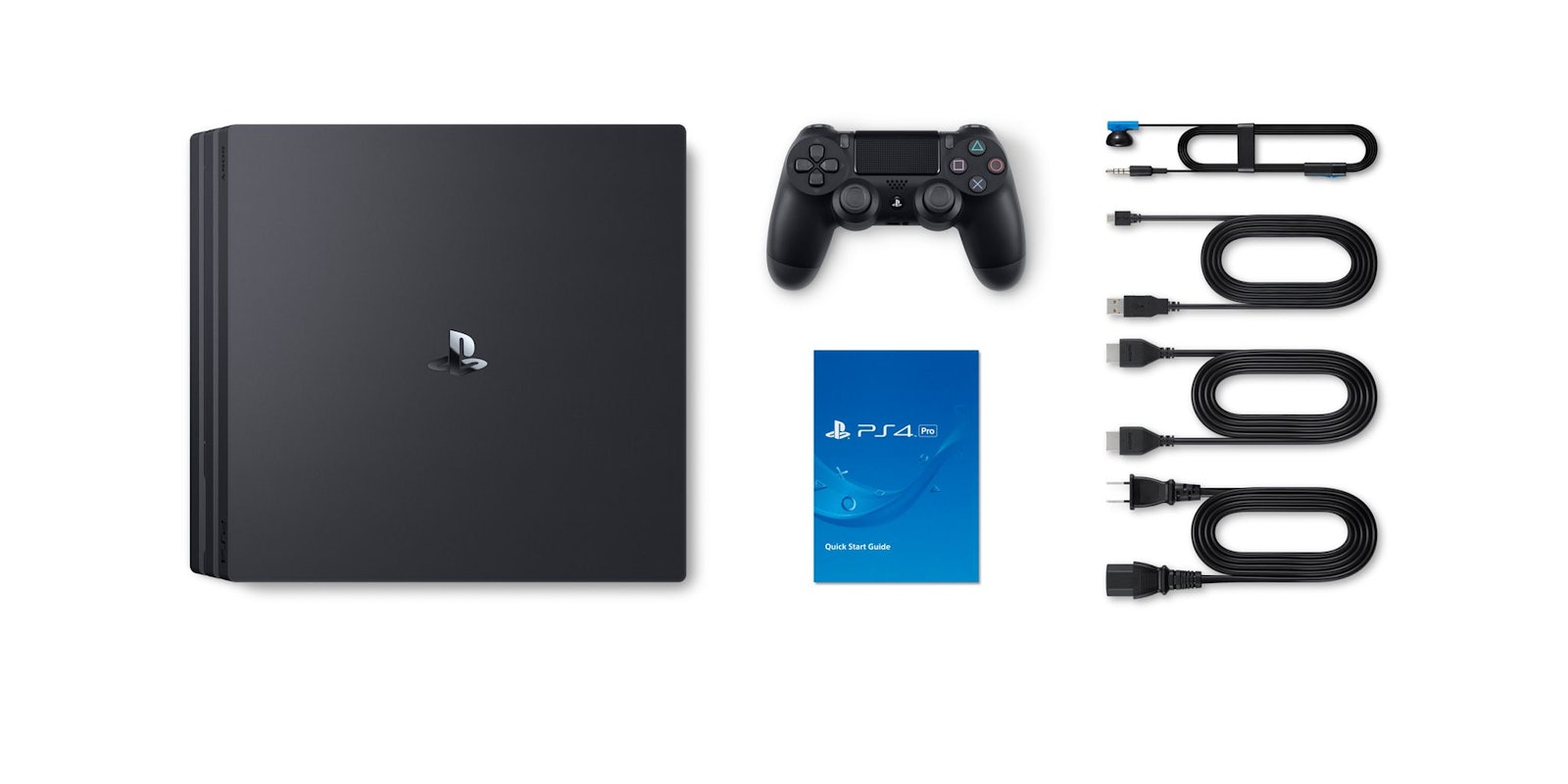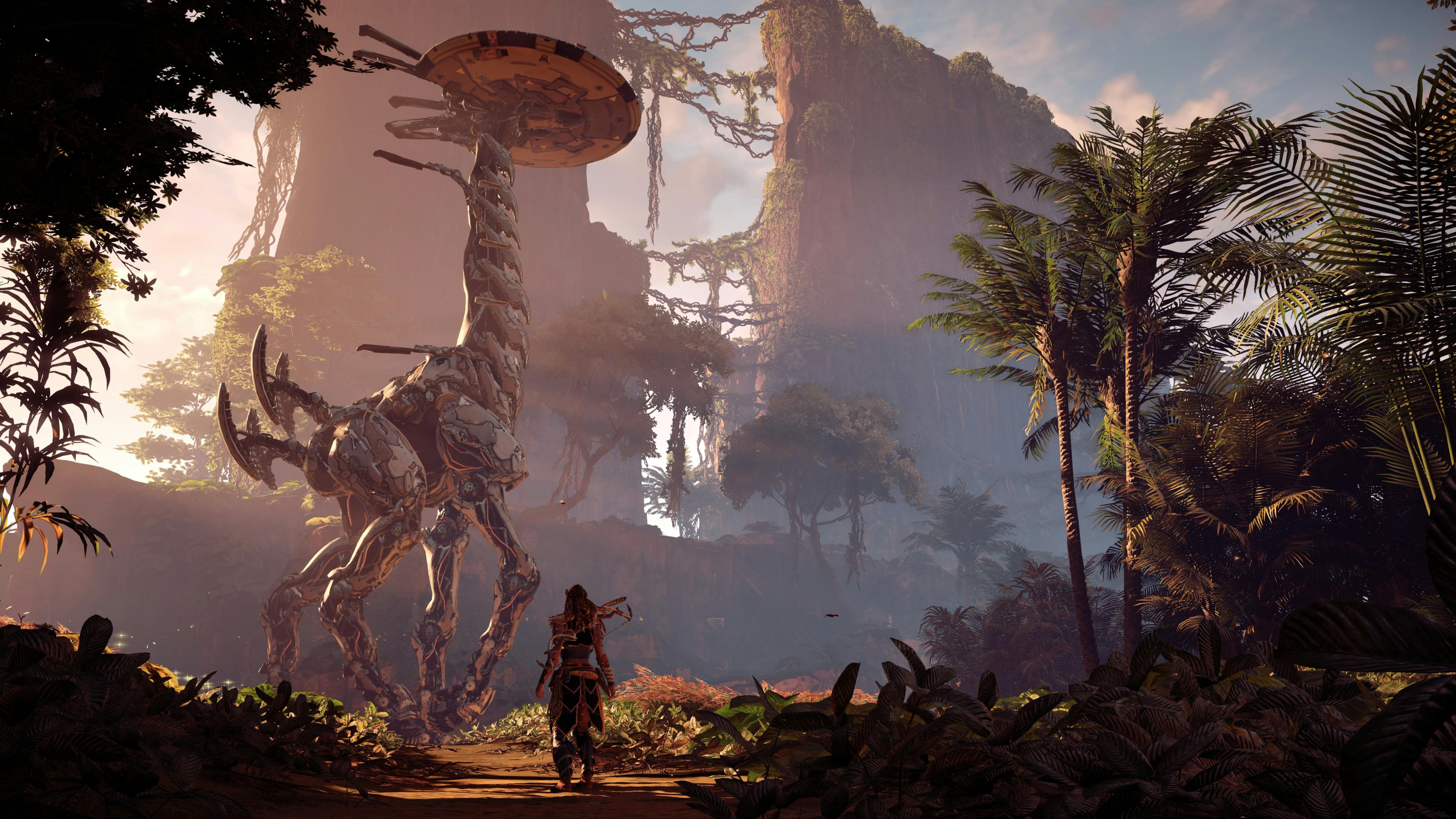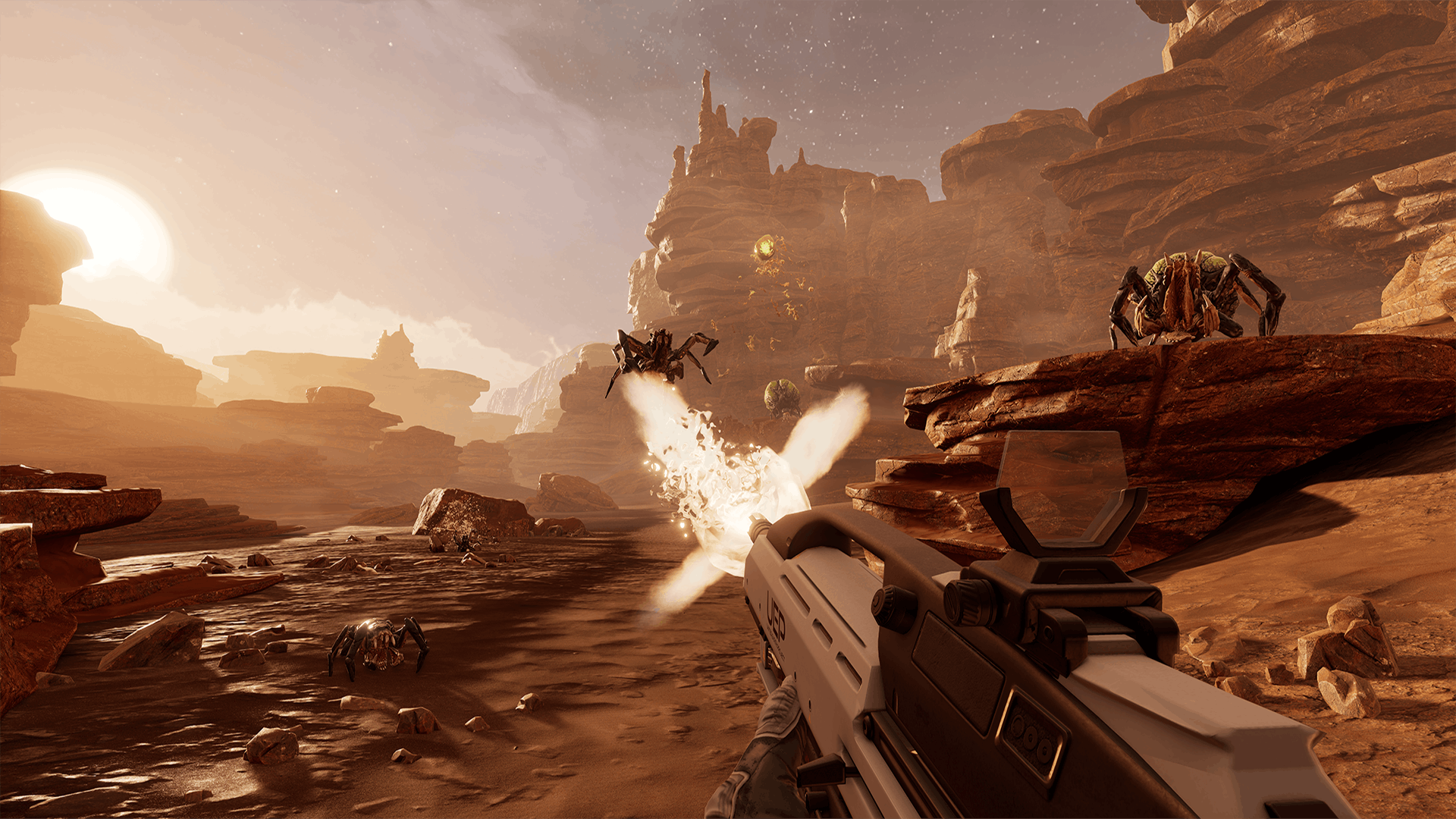Talking about the PlayStation 4 Pro feels a little bit like talking about virtual reality. Unless someone has seen the Pro in action, it may be tough to explain why it matters.
Sony’s pitch for the PS4 Pro (out Nov. 10 at a price of $399) on Wednesday focused on the benefit of playing games in 4K resolution and High Dynamic Range (HDR) video. Anyone who didn’t watch the press conference or demonstrations of the Pro uploaded to YouTube on a 4K display (likely most of the audience) can’t grasp the weight of these improvements because they literally cannot see them.
Having seen this difference for myself, seated feet away from a huge 4K television while Michiel van der Leeuw, technical director at Guerrilla Games, walked me through a demo of Horizon Zero Dawn, I can tell you that the difference is substantial. It also had nothing to do with 4K resolution specifically.
In the demo, Horizon Zero Dawn’s hero, Aloy, stood on a rocky cliff overlooking a jungle below. The improvement to the texture quality on the rocks behind Aloy when the game was displayed in Pro mode was striking, this being a perfect demonstration of what the increased resolution of a 4K display makes possible.
That’s also the sort of thing you will cease to notice when Aloy is riding at high speeds down ziplines and engaging in desperate hand-to-hand combat with raptor-sized Watcher robots. The background becomes a blur as your attention is focused on immediate demands. And when the fighting is over, unless you take a moment to stop and stare down at the grass, or walk back up to those rocks, the benefits of 4K resolution may not be obvious.
What was still obvious after my demo guide stopped fighting and looked up again at the environment, however, were the benefits of HDR video. Imagine an artist painting a sunset with only four shades of orange and red. Now imagine the artist being handed a dozen shades of red and orange, and repainting the same sunset. The new sunset would look more vibrant, for the additional gradations of color.
That’s an admittedly simple analogy for the difference between the regular PS4 and the PS4 Pro. And the PS4 looked terrible by comparison. When van der Leeuw switched from 4K display to regular 1080p, it was as though I’d put on a pair of very weak sunglasses that muddied the colors, almost as though a thin, grey film had been washed over the image.
When I played Horizon Zero Dawn at E3 this year, I thought the game looked fantastic, and the PS4 Pro demo aside, I’m sure when I play Horizon Zero Dawn next year on my HDTV it will never occur to me to think the game looks bad.
But I’m also unlikely to forget the gorgeous view of the sun rising behind white, puffy clouds, the quality of the light reflecting off the metal surface of a giant robot’s disc-like head, the brilliant gradations of color when holograms were projected around Aloy, and the warm color of her skin, when Horizon Zero Dawn was displayed in HDR.
Every current PS4 owner can take advantage of HDR after Sony releases a firmware update next week. No one needs a Pro to enjoy what I enjoyed this week. This is where things get tricky for PlayStation fans and for Sony.
The PS4 Pro doesn’t include an HD Blu-ray player. Sony Interactive Entertainment president and CEO Andrew House said that instead the Pro’s focus was on the games.
Microsoft tried and failed to position the Xbox One as an all-in-one living room media player, while Sony focused on the games when promoting the PlayStation 4. This difference in strategy is generally accepted as the reason Sony is dominating the console market. Sony’s decision to drop the HD Blu-ray player for the Pro feels like an extension of this strategy.
Microsoft abandoned HD-DVD support on the Xbox 360 in favor of a Blu-ray player on the Xbox One, recognizing how many consumers enjoy the added benefit of watching Blu-ray movies on their game consoles. Sony’s decision to remove the HD Blu-ray player from the Pro doesn’t make sense, from this perspective. Are PS4 owners supposed to keep their PS4 hooked up alongside a Pro, if they make the upgrade?
House noted that Netflix would offer an app for the Pro that supports 4K streaming, and cited Narcos and the upcoming Luke Cage series as content that would support 4K streaming, but selection will be more important than a few token examples.
There’s an argument to be made that Sony didn’t show enough games to inspire enthusiasm about purchasing a PS4 Pro this year. Call of Duty: Black Ops III, Deus Ex: Mankind Divided, Rise of the Tomb Raider, The Elder Scrolls Online, and the remastered version of Call of Duty: Modern Warfare are releases that will be retrofitted to support the PS4 Pro. They’re also games that people have already played.
For Honor and Horizon Zero Dawn are February 2017 releases that will support the Pro. Mass Effect Andromeda’s thruster pack exhausts and holograms and energy beams looked great in HDR, but Andromeda has no specific release date next year. Sony showed footage from the new Spider-Man game in development by Insomniac Games by way of demonstrating the power of the Pro, and Spider-Man has no release date at all.
That leaves six fresh titles on the immediate horizon that will support the PS4 Pro: Battlefield 1, Call of Duty: Infinite Warfare, Dishonored 2, FIFA 17, Killing Floor 2, and Watch Dogs 2. So, for the sake of having six, fresh experiences in 4K resolution and in HDR, you’re looking at spending $400 on the Pro, and I haven’t seen a 4K/HDR television from a brand I trust going for any lower than $400 on Amazon.
And here’s where the analogy to virtual reality comes in: Unless you’ve seen for yourself what HDR gaming looks like, I can understand the reluctance to consider spending $800 to enjoy six new games in 2016 that support these new standards. It’s the same reluctance consumers might feel spending $600 on an Oculus Rift or $800 on an HTC Vive if they’ve never tried VR.
The Vive and Oculus Rift are not devices for casual PC gamers. They’re meant for VR enthusiasts and tech fetishists, not for general consumption. The PS4 Pro is not meant for all PlayStation fans. It’s meant for the hardest of the hardcore gamers, with money to burn. What percentage of the 40 million PlayStation 4 users are the hardest of the hardcore?
I was only able to demo one PlayStation VR game, Farpoint, on the PS4 Pro. Farpoint was also the only VR game that Sony cited during the press conference as taking advantage of the Pro, by doubling the game’s pixel density.
When I played Farpoint at E3 in June, I sometimes felt a twinge of nausea when I was looking in one direction while walking in the other, or if I moved my head around too quickly. There was a healthy amount of aliasing—jagged lines on the edges of surfaces—in Farpoint when I played the game at E3, and I’ve noticed a direct correlation between aliasing and feeling sick in VR games.
I know how to lock my head forward in VR to avoid some of this nausea whenever I’m in motion, and to only look around when I’m standing still. I didn’t have to do too much of this when I played Farpoint at E3, certainly not enough to ruin the experience, but I was aware of the need.
Playing Farpoint on the Pro, I didn’t feel those twinges of nausea. I didn’t have to be disciplined about where I was looking in relation to how I was moving. My first suspect was that Farpoint was running at a faster framerate on the Pro, than on the regular PS4 at E3. Generally speaking the faster the framerate in VR, the less nausea you might feel.
Greg Koreman, a developer at Impulse Gear, the studio behind Farpoint, told me that the PS4 Pro demo was running at the same framerate as the E3 demo. However, the increased power of the Pro allowed Impulse Gear to double Farpoint’s pixel density. The higher the pixel density, the less aliasing you see in an image, generally speaking. The Farpoint demo on the Pro was only one example, but it was enough to conceptualize the Pro’s value-add for PlayStation VR owners.
Whether or not someone buys the PS4 Pro may come down to the same calculations by which consumers decide whether or not to buy a virtual reality rig. The technology—4K displays, HDR video, VR—sounds cool, but do consumers have the money to take an expensive risk?
And in a final parallel, the fate of the PS Pro is subject to the same chicken-or-egg conundrum as VR. Do developers want to spend the extra time needed to support PS4 Pro before the new console has a large install base? And without enough games that support PS4 Pro, will anyone want the new console?
These are the same questions Microsoft will be facing in 2017 with the release of its own incremental console upgrade, Project Scorpio. Talking about the death of the traditional console cycle, when new hardware that is a marked upgrade from the previous generation is released every four to six years, is no longer academic. The PS4 Pro ushers in this new era. The biggest question of all is whether gamers will accept it.





